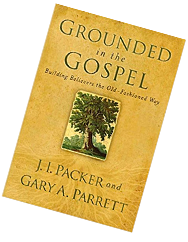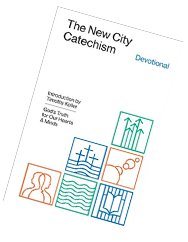Back to series


Recommended Reading:

Catechesis and Christian Discipleship
Click here to open a Print-Friendly PDF
If you were asked to articulate the contemporary church’s greatest weakness, what would you say? Would you point to the tendency among so many Christians to conform to the surrounding culture on issues such as gay marriage? Would you argue that evangelicals and mainline Christians have both become too captive to political ideologies and failed to remain faithful to the King of kings and Lord of lords? Perhaps you would mention the prosperity gospel or the multibillion-dollar Christian entertainment industry shaping so much evangelical worship? Others have made those arguments, and I am in many ways sympathetic.
However, it seems to me that there is a deeper, more foundational problem that is too often overlooked. I suggest that the eclipse of catechetical discipleship ministry is among the greatest threats facing the church today.
 If this suggestion is surprising, please bear with me. The word catechesis comes from the Greek katēcheō and is used in the New Testament to describe “instruction” in the substance of the gospel—the basic story of salvation.1
If this suggestion is surprising, please bear with me. The word catechesis comes from the Greek katēcheō and is used in the New Testament to describe “instruction” in the substance of the gospel—the basic story of salvation.1
Catechesis has the sense of handing on something that has been received, so it is not instruction in new truths but the faithful teaching of wisdom long preserved (see 1 Cor. 15:3).
Indeed, catechesis is the church’s classical approach to forming disciples in the Bible’s grand drama of creation, fall, redemption, and consummation. For nearly two thousand years, catechists have sought not only to teach the biblical story, but also to guide new Christians into a process of assimilation to that story, so that the life and mission of Jesus Christ would shape the belief, prayer, worship, and moral life of new disciples.
J.I. Packer and Gary Parrett published a book in 2010 titled Grounded in the Gospel: Building Believers the Old Fashioned Way.2 The book was a passionate call for Christians in the twenty-first century to return to the ancient and time-tested work of catechesis.
They argued that the “eclipse” of catechesis may be the “deepest root of the immaturity that is so widespread in evangelical circles.”3 With John Calvin, who surely echoes early church fathers, they believe that “the Church of God will never be preserved without catechesis.”4 I agree with Packer and Parrett, and in the pages that follow, I will commend traditional catechesis as an essential, reliable, and time-tested form of discipleship.
The Content of Catechesis
Discipleship is a process of transformation, growth, and illumination. It is deeply personal, and because Jesus Christ cares for each of us individually, discipleship will be as diverse as humanity itself. At the same time, there is only one true teacher — Jesus Christ the Lord.
And for each disciple, there is only one way, one truth, and one life to embrace. When Jesus walked with His own disciples on the road to Emmaus, He did not say, “come with Me, and I will teach you to find your own path.” Instead, “beginning with Moses and all the Prophets, he interpreted to them in all the Scriptures the things concerning himself” (Luke 24:27).5
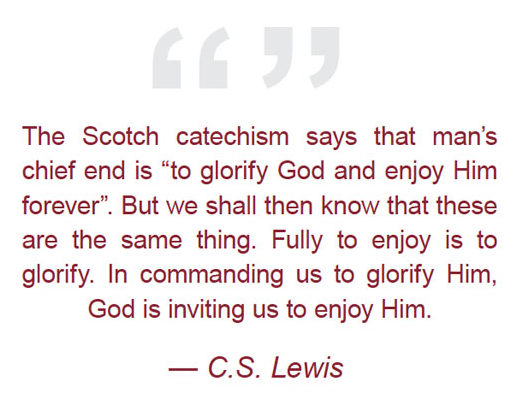 There is a right way to interpret “the Scriptures,” and this way of interpretation can be communicated, understood, learned, and passed down. Indeed, it has been communicated, understood, learned, and passed down from the time of Jesus through the apostles and in every generation into our own age.
There is a right way to interpret “the Scriptures,” and this way of interpretation can be communicated, understood, learned, and passed down. Indeed, it has been communicated, understood, learned, and passed down from the time of Jesus through the apostles and in every generation into our own age.
This “consensus faith”6 is what C.S. Lewis meant by the term mere Christianity, and believers through the ages have sought to guard and pass it along in their catechisms.7
Although there are many words that can and should be used for the church’s work of discipleship, there is value in retaining the word catechesis because it refers, historically, to the process of instructing new believers in the most basic pillars of the one faith handed down through the ages.
Catechesis, in other words, can help us avoid the problem of subjectivism in our work of discipleship. It reminds us that we are sharing a particular faith, which we ourselves have received and now steward. Discipleship is not merely loving people; it must involve equipping converts “to contend for the faith that was once for all delivered to the saints” (Jude 1:3).
But how can we communicate the substance of Christianity, and who decides what basic elements should be learned by disciples? To answer these questions, we would do well to pay attention to the early church fathers and the Reformers who found it helpful to focus on several common elements: (1) the overarching narrative of Scripture, (2) the Apostles’ Creed, (3) the Lord’s Prayer,8 (4) and the Ten Commandments. Together, these pillars capture the form of the “faith once delivered.”
The Narrative of Scripture
By the end of the second century, new converts to Christianity were required to learn the new faith over an extended period of time before their baptisms. Celsus, the famous pagan philosopher and harsh critic of Christianity, once quipped that “if all people wanted to be Christians, the Christians would no longer want them.”9
At this time, the church was growing rapidly, and it was assumed that a new Christian could not worship or pray to the one true God without learning of God’s own self-identification in Jesus Christ attested in the Scriptures. In the fourth and fifth centuries, a long process of catechesis was still the norm.
 Augustine of Hippo, for instance, would offer a single address to potential converts and cover the whole sweeping history of salvation, what he called the narratio and Christians today often refer to as the biblical narrative. This address was evangelistic in nature and was considered a kind of precatechesis offered to persons interested in becoming Christian.
Augustine of Hippo, for instance, would offer a single address to potential converts and cover the whole sweeping history of salvation, what he called the narratio and Christians today often refer to as the biblical narrative. This address was evangelistic in nature and was considered a kind of precatechesis offered to persons interested in becoming Christian.
In response to an inquiry about how to cover so much material in a single address, Augustine wrote that “the narrative is complete when the beginner is first catechized from the text, ‘In the beginning God created heaven and earth,’ down to the present period of Church history.”10
Obviously, he was not suggesting that catechumens learn every detail of the Scriptures in a single day. Instead, he argued that evangelists should focus on the pivotal themes, prophecies, and events, which best prefigure the life and work of Jesus Christ and his body, the church. His principle of selection is captured well in this statement:
For no other reason were all the things that we read in the holy Scriptures written before our Lord’s coming than to announce his coming and to prefigure the Church to be… Therefore, in the Old Testament the New is concealed, and in the New the Old is revealed.11
After a compelling introduction to the overarching narrative, inquirers could choose to enter the catechetical process where regular preaching would fill in the initial introduction to the narratio. As they became part of the Christian community, the moral conduct of catechumens came under scrutiny, and they were expected to amend their lives if necessary. The catechetical process was focused on a transformation of the hearts, minds, and habits of new believers.
The Apostles’ Creed
Packer and Parrett are sensitive to noncreedal traditions and suggest a number of ways to accomplish the intent of catechesis without specific instruction on the Apostles’ Creed.12
I highly recommend their book, especially to Christians considering catechesis for the first time. Yet it is wise to consider what the creeds meant and accomplished within the early church, since we should not reject them out of misunderstanding. So why are the creeds important?
The Apostles’ Creed, in particular, provides a very basic overview of the biblical story and identifies the Father, Son, and Holy Spirit as authors and central actors in that story as well as in the creation and ultimate salvation of the church. In teaching the theology of the creed, we can be confident that we are summarizing the faith in a way that is consistent with the biblical canon’s own formation.13
The creed in no way replaces the Bible or possesses an authority equal to it. However, it does provide an interpretive framework in keeping with the development of historic Christian orthodoxy. This is why some Protestant scholars, remaining faithful to the Reformers, argue that the biblical canon possesses a magisterial authority while the creeds possess a ministerial authority.14
Augustine of Hippo and other church fathers understood the value of the creed in exactly this way. In one of his catechetical sermons, Augustine commended the creed to catechumens during the season of Lent, not long before their baptisms:
These truths, that you are about to receive, that you will commit to memory and press in words, are neither new nor unfamiliar to you. For you are used to hearing them laid out in a variety of ways in holy Scripture and in sermons given in the church. But now they are to be handed over to you gathered together, compressed down, and arranged in a fixed order: so that your faith may be well grounded, your public profession prepared for, and your memory not overburdened.15
Having spent several years overseeing the instruction of catechumens through regular preaching, Augustine was confident that they have had deep and wide exposure to biblical truth. He worried, however, that this truth was so expansive as to be unmanageable, so he recommended the creed as a framework within which to fit the individual parts. William Harmless explains that “Augustine, like Cyril and Ambrose, saw the Creed as a compendium of the core elements of the faith.”16
On Prayer and Worship
We must remember, however, that the creed was not memorized to encourage converts to become puffed up in the pride of their new knowledge. On the contrary, the creed was a necessary ingredient for mature faith and for a life of prayer and love. Augustine explains that
The creed is learned by listening; it is written, not on tablets nor on any material, but on the heart. He who has called you to his Kingdom and glory will grant that, when you have been reborn by his grace and by the Holy Spirit, it will be written in your hearts, so that you may love what you believe and that, through love, faith may work in you and that you, no longer fearing punishment like slaves, but loving justice like the freeborn — may become pleasing to the Lord God, the giver of all good things.17
 In a short but mature work focused on the most basic truths of Christianity, Augustine explains in greater detail how a knowledge of the creed aids formation in faith, hope, and love.18 His comments on the subject express the principle of lex orandi, lex credendi,19 which can be translated as “the law of praying is the law of believing.”
In a short but mature work focused on the most basic truths of Christianity, Augustine explains in greater detail how a knowledge of the creed aids formation in faith, hope, and love.18 His comments on the subject express the principle of lex orandi, lex credendi,19 which can be translated as “the law of praying is the law of believing.”
The basic contention of this principle is that prayer and worship are intimately and necessarily connected to belief. How, for instance, can we pray to a God whom we do not know? How can we worship God if we have paid no attention to His self-revelation in holy Scripture? The flip side of this principle is that the ultimate purpose of clarifying belief is to enrich and properly order prayer and worship.
Faithful Christian prayer is always shaped by the knowledge of God’s will (Thy kingdom come, Thy will be done) and is thus always dependent on God’s prior revelation.
As Graeme Goldsworthy writes in his extremely helpful book on the subject, “Christians at prayer have only one option: to pray towards the fulfillment of God’s revealed purpose for the whole universe.”20 Or, in the words of Paul, “How then shall they call on him in whom they have not believed?” (Rom. 10:14 KJV).
Likewise, there is a clear and intimate connection between knowing God and loving (Matt. 22:36–40; 1 John 4:7). We must know God to love Him, and we must love God and others to truly know Him. Christians through the ages, have emphasized the biblical truth that formation in the love of Christ is well served by instruction in matters of faith (the creed), in matters of prayer (the Lord’s Prayer), and in God’s commands (love).
The Latin phrase lex orandi, lex credendi, lex vivendi obviously adds to the more ancient dictum and captures the truth that our praying and believing inform and shape our living.
The Ten Commandments
It may seem strange that catechesis should reach back into the Old Testament to instruct new believers in the law given to Moses. However, the practice makes good sense if we approach the Bible as a narrative whole, as Christians traditionally have done. Remember Augustine’s hermeneutical rule, cited above: “in the Old Testament the New is concealed, and in the New the Old is revealed.”21
So what is concealed in the Ten Commandments, and how is it revealed in the New Testament? Obviously, this question is answered for us in Jesus’s words: “You shall love the Lord your God with all your heart and with all your soul and with all your mind. This is the great and first commandment.
And a second is like it: You shall love your neighbor as yourself. On these two commandments depend all the Law and the Prophets” (Matt. 22:37–40)22. Accordingly, the process of catechesis has formation in love as its ultimate aim. Augustine is straightforward in the Enchiridion:
All the commandments of God, then, are embraced in love, of which the apostle says: “Now the end of the commandment is charity, out of a pure heart, and of a good conscience, and of faith unfeigned.” Thus, the end of every commandment is charity, that is, every commandment has love for its aim. But whatever is done through fear of punishment or from some other carnal motive and has not for its principle that love which the Spirit of God sheds abroad in the heart, is not done as it ought to be done, however it may appear to men.23
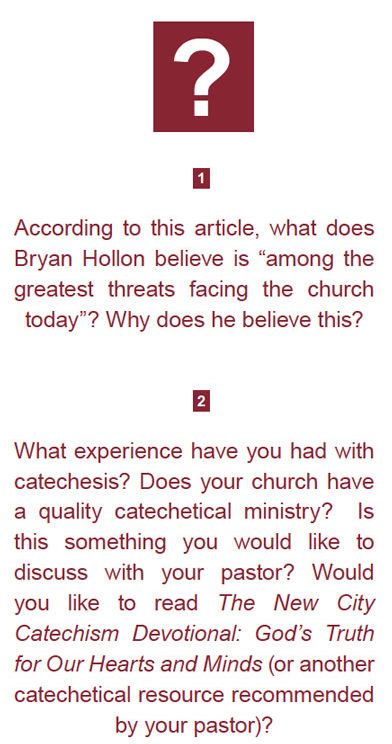 We must distinguish the love mentioned here, which is the aim of all Christian formation, and the sentimentality that so often passes for love.
We must distinguish the love mentioned here, which is the aim of all Christian formation, and the sentimentality that so often passes for love.
Instruction in the commandments can help us make this distinction, since they teach that loving God requires putting away all idols, keeping the sabbath holy, and refusing to take God’s name in vain (Exod. 20:3–8).
In other words, we are not to love any God but the one true God who has revealed His character, nature, and purposes through Jesus Christ, the One attested to in the Bible’s history of salvation.
It requires us to avoid taking God’s name in vain, which is to identify God with anyone other than Jesus Christ who said, “Whoever has seen me has seen the Father” (John 14:9).
God revealed that His name is YHWH (I Am) at the burning bush (Exod. 3:1–17), and this name conceals as much as it reveals until Jesus Christ brings clarity with statements, such as “before Abraham was, I Am” (John 8:58).
Jesus Christ is God in the flesh. The God of the Old Testament has been revealed in the New.
The commandments also teach us that our love for others is living and active, not mere sentiment. Love is worked out as we honor others and seek justice in relationships with our parents, spouses, and neighbors (Exod. 20:12–17). In all of our relationships, our motives are especially important, as Augustine insists:
For it is from [the commandments] that we hear this voice: “The end of the commandment is charity,” and “God is love.” Wherefore all God’s commandments, one of which is, “Though shalt not commit adultery,” and all those precepts which are not commandments but special counsels, one of which is, “It is good for a man not to touch a woman,” are rightly carried out only when the motive principle of action is the love of God, and the love of our neighbor in God.24
Conclusion
Readers may recognize that an emphasis on the grand narrative of the Bible is very much in fashion in recent decades. Articles, essays, books, church curricula, and videos25 have been produced to help Christians understand, once again, that the Bible tells one story of creation, fall, redemption, and consummation and that Christians are to enter, imaginatively, into the biblical world to identify with its characters and overall plot.
The history of catechesis serves as a good reminder that we are hardly the first generation to have understood the Bible’s narrative character. We should also take note of the fact that, in the early church, the narratio was only the first stage in the process of forming new Christians.
As important as the story of Scripture was and is, the ultimate goal of Christian discipleship is not only head knowledge of the biblical story but a participatory knowledge of God through formation in love (see 1 John 4:7–8). Christian formation requires both the head and the heart.
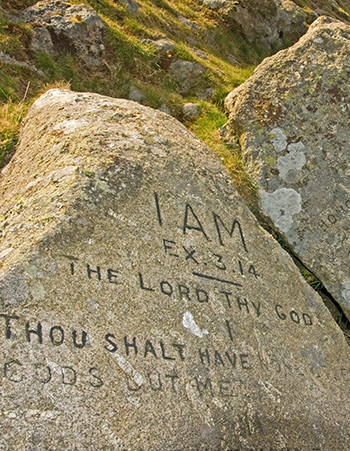 This kind of formation entails repentance, faith, and growth in holiness. As Thomas Aquinas wrote, “All [knowledge of God] is produced by an assimilation of the knower to the thing known, so that assimilation is said to be the cause of knowledge.”26
This kind of formation entails repentance, faith, and growth in holiness. As Thomas Aquinas wrote, “All [knowledge of God] is produced by an assimilation of the knower to the thing known, so that assimilation is said to be the cause of knowledge.”26
Sound catechesis requires that Christians learn the story of Scripture and submit themselves to the lordship of the Bible’s author and primary subject.
It has an epistemology of love (assuming that true knowledge of God entails loving others) and a hermeneutic of love (assuming that a proper reading of Scripture entails a transformative encounter with Jesus Christ who first loved us). Love is the shape of Christ’s body and of the Christian life.
The process of catechesis focuses on heart, mind, and habit, while the content of catechesis provides something like a road map, which should enable new Christians to make sense of this new life offered in Jesus Christ, witnessed by the church, and attested in the Bible.
It keeps us grounded in the realization that discipleship is always personal but that it also entails handing over a particular faith, “the faith that was once for all delivered to the saints” (Jude 1:3). How does catechesis guard and hand on the apostolic faith? It captures the basic form of Christian faith by focusing on:
1. The Biblical Narrative: Christians need to learn the biblical narrative and come to understand themselves from within its dramatic unfolding, as sinners saved by grace.
2. The Creed: Christians need to know the true God: Father, Son, and Holy Spirit, who is both author and primary subject of the biblical story.
3. The Lord’s Prayer: Christians must live in repentance, which involves putting off rebellious wills and learning to pray sincerely that God’s will be done.
4. The Ten Commandments: Christians are to love God above all else and understand that our love for God is worked out in tangible ways in relation to family, friends, and neighbors.
2. The Creed: Christians need to know the true God: Father, Son, and Holy Spirit, who is both author and primary subject of the biblical story.
3. The Lord’s Prayer: Christians must live in repentance, which involves putting off rebellious wills and learning to pray sincerely that God’s will be done.
4. The Ten Commandments: Christians are to love God above all else and understand that our love for God is worked out in tangible ways in relation to family, friends, and neighbors.
This basic catechetical framework has served the church well from the very beginning, and it will no doubt continue to do so. Because we are all made in God’s image and have restless hearts apart from our Creator, churches will always find people eager to hear the gospel and embrace it as very good news.
This ancient form of discipleship invites new believers to step out of themselves and see with fresh eyes as the biblical story transforms their view of the world and of themselves within it. It invites converts to know God personally as Father, Lord and Savior, and ever-present Comforter.
It guides repentance and true conversion and teaches believers to align their own wills with God’s will in prayer. Catechesis, if it is practiced well, is ordered to the formation of new Christians in faith, hope, and especially in love. Catechesis is merely a word describing the ancient process of handing over the true faith to new believers. However, as C.S. Lewis often reminds us, there is value in keeping these ancient ideas alive and well.
On a practical note, if the idea of catechesis is new to you, or if you would like to explore a catechetical ministry in your own church, there are many ways to begin. You can always read and guide others through a classical catechetical work, such as Augustine’s Enchiridion on Faith, Hope, and Love or Martin Luther’s Large or Small Catechism.
The Heidelberg Catechism remains an especially beautiful and accessible introduction to the basic pillars of the faith. The Anglican Church in North America has produced a new catechism titled To Be a Christian: An Anglican Catechism, under the general editorship of J.I. Packer. Tim Keller in partnership with the Gospel Coalition has recently developed The New City Catechism along with an app, complete curricula for children and adults, and an accompanying devotional.
Another simple approach would be to find the best books you know of covering the biblical drama, the creed, the Lord’s Prayer and the Ten Commandments. In the hands of a competent teacher and pastor, individual book resources can be used to help new Christians understand the coherent form of the faith and what it means not only to enter into the biblical story imaginatively but to let the biblical story enter into and shape their own hearts and minds.
|
|
|||
|
Notes: 6 Vincent of Lérins argued for a clear and recognizable consensus faith passed down through the generations and developed according to clear criteria. He coined the famous phrase ubique, temper, et ab omnibus (always, everywhere, and by everyone) to distinguish this faith from heresies. For a recent defense of Vincent’s proposal, see Thomas G. Guarino, Vincent of Lérins and the Development of Christian Doctrine (Grand Rapids: Baker Books, 2013). C.S. Lewis also recognized a consensus faith and wrote that “Measured against the ages ‘mere Christianity’ turns out to be no insipid interdenominational transparency, but something positive, self-consistent, and inexhaustible. I know it, indeed, to my cost. In the days when I still hated Christianity, I learned to recognise, like some all too familiar smell, that almost unvarying something which met me, now in Puritan Bunyan, now in Anglican Hooker, now in Thomist Dante. It was there (honeyed and floral) in Francois de Sales; it was there (grave and homely) in Spenser and Walton; it was there (grim but manful) in Pascal and Johnson; there again, with a mild, frightening, Paradisial flavour, in Vaughan and Boehme and Traherne.” See Lewis’s “Introduction” to Athanasius, On the Incarnation (Yonkers, NY: St Vladimir’s Seminary Press, 2011), 7–8. 7 I am not suggesting that the various catechisms of, e.g., Protestantism and the Roman Catholic tradition, are the same. Rather, they all tend to include teaching on the same basic subject matter: the creed, the Lord’s Prayer, sacraments, and the Ten Commandments, among other topics. 8 Instruction in the Lord’s Prayer has often been accompanied by instruction in the sacraments. As a catechist myself, I consider this instruction essential, though I won’t address the sacraments in this essay. The early creeds and the biblical canon were mutually formative. Indeed, development of the creeds can be traced from the summative preaching of the apostles (the kerygma), through the rule of faith. The rule of faith is little more than a summation of the biblical narrative; if you place a version of it beside the Apostles’ Creed, it is very obvious that the creed is a condensed and memorable version of the rule of faith. Moreover, the rule of faith was widely acknowledged in the second and third centuries as a standard of Christian orthodoxy and was one of the key criteria used to determine which of the controversial books would be included in or excluded from the biblical canon.13 In the words of Michael Bird, the rule of faith and the creedal tradition stemming from the rule of faith “go together like peanut butter and jelly or like Vegemite and avocado… The formation of the biblical canon and the origin of the early creeds arose out of processes that were concurrent and mutually influential.” Michael F. Bird, What Christians Ought to Believe: An Introduction to Christian Doctrine through the Apostles’ Creed (Grand Rapids: Zondervan, 2016), 29. 14 Michael Horton makes this argument in various publications. See his The Christian Faith: A Systematic Theology for Pilgrims on the Way (Grand Rapids: Zondervan, 2011). 15 Augustine, Sermon 214.1, trans. and cited in Harmless, Augustine and the Catechumenate, 277. 25 While there have been far too many works to mention in a note, two noteworthy books are Graeme Goldsworthy, According to Plan: The Unfolding Revelation of God in the Bible. (Downers Grove, IL: InterVarsity, 1991), and D.A. Carson, The God Who Is There: Finding Your Place in God’s Story (Grand Rapids: Baker Books, 2010). An inquisitive reader might do a Google search with terms such as “the story”; “the drama of Scripture”; “grand narrative of Scripture.” |
|||

Bryan C. Hollon
Dean President, Trinity School of Ministry Bryan C. Hollon, Ph.D., is Dean President of Trinity School for Ministry in Ambridge, Pennsylvania. Previously he served as the City Director of the C.S. Lewis Institute of Northeast Ohio and as a Professor of Theology and Director of the Center for Christian Faith & Culture at Malone University. Dr. Hollon was ordained a priest in the Anglican Church in North America (ACNA) in 2015. In 2017, he planted and pastored St. John’s Anglican Church in Canton, Ohio until 2021. As a scholar, Dr. Hollon specializes in ressourcement theology, which is best exemplified in the work of Henri de Lubac. He is also a proponent of the great consensual tradition that C.S. Lewis referred to as “Mere Christianity.”
Recommended Reading:
J. I. Packer and Gary A. Parrett, Grounded in the Gospel: Building Believers the Old Fashioned Way (Baker, 2010).
Historically, the church’s ministry of grounding new believers in the essentials of the faith has been known as catechesis—systematic instruction in faith foundations, including what we believe, how we pray and worship, and how we conduct our lives. For most evangelicals today, however, this very idea is an alien concept. Packer and Parrett, concerned for the state of the church, seek to inspire a much needed evangelical course correction. This new book makes the case for a recovery of significant catechesis as a nonnegotiable practice, urging evangelical churches to undertake this biblical ministry for the sake of their spiritual health and vitality.
The New City Catechism Devotional: God’s Truth for Our Hearts and Minds, Collin Hansen, general editor, Introduction by Timothy Keller (Crossway, 2017)
In centuries past, the church used catechisms to teach foundational Christian doctrines. In today’s world of shifting beliefs, this communal practice of learning biblical truth via questions and answers is more needed than ever before.
Seeking to restore this ancient method of teaching to the regular life of the church, The New City Catechism Devotional is a gospel-centered, modern-day resource that not only summarizes important Christian beliefs through fifty-two questions and answers but also helps readers be transformed by those doctrines.
Each question features a relevant Scripture reading, a short prayer, and a devotional commentary written by contemporary pastors (including John Piper, Timothy Keller, and Kevin DeYoung) and historical figures (such as Augustine, John Calvin, Martin Luther, and many others). Designed for use in a variety of contexts, The New City Catechism Devotional is a valuable resource for helping believers learn and meditate on the doctrines that stand at the heart of the Christian faith.
 COPYRIGHT: This publication is published by C.S. Lewis Institute; 8001 Braddock Road, Suite 301; Springfield, VA 22151. Portions of the publication may be reproduced for noncommercial, local church or ministry use without prior permission. Electronic copies of the PDF files may be duplicated and transmitted via e-mail for personal and church use. Articles may not be modified without prior written permission of the Institute. For questions, contact the Institute: 703.914.5602 or email us.
COPYRIGHT: This publication is published by C.S. Lewis Institute; 8001 Braddock Road, Suite 301; Springfield, VA 22151. Portions of the publication may be reproduced for noncommercial, local church or ministry use without prior permission. Electronic copies of the PDF files may be duplicated and transmitted via e-mail for personal and church use. Articles may not be modified without prior written permission of the Institute. For questions, contact the Institute: 703.914.5602 or email us.
-
Recent Podcasts
The Emergence of Evangelical Discipleship
by Aimee Riegert, Tom Schwanda on July 11, 2025Evangelical Discipleship: What can we learn from the...Read More
-
Reasoning Requires Faith – Jeffrey Geibel’s Story
by Jeffrey Geibel on July 4, 2025
-
Fix Your Eyes Upon Jesus
by Steven Garber, Aimee Riegert on June 27, 2025
-
Recent Publications
Are Miracles Possible
by Christopher L. Reese on June 1, 2025The 21st century has provoked many conversations and...Read More
-
Is God Just, Not Fair?
by Jennifer Rothschild on May 15, 2025
-
Seeking Dietrich Bonhoeffer
by Joseph A. Kohm on April 29, 2025
0
All Booked
0.00
All Booked
0.00
All Booked
24720
The Adventure of Joining God in His Work Live Online Small Group 7:00 PM CT
https://www.cslewisinstitute.org/?event=the-adventure-of-joining-god-in-his-work-live-online-small-group-700-pm-ct&event_date=2025-09-16®=1
https://www.paypal.com/cgi-bin/webscr
2025-09-16

Next coming event
Days
Hours
Minutes
Seconds
The Adventure of Joining God in His Work Live Online Small Group 7:00 PM CT
On September 16, 2025 at 7:00 pmSpeakers

Bryan C. Hollon
Dean President, Trinity School of Ministry
Team Members

Bryan C. Hollon
Dean President, Trinity School of MinistryBryan C. Hollon, Ph.D., is Dean President of Trinity School for Ministry in Ambridge, Pennsylvania. Previously he served as the City Director of the C.S. Lewis Institute of Northeast Ohio and as a Professor of Theology and Director of the Center for Christian Faith & Culture at Malone University. Dr. Hollon was ordained a priest in the Anglican Church in North America (ACNA) in 2015. In 2017, he planted and pastored St. John’s Anglican Church in Canton, Ohio until 2021. As a scholar, Dr. Hollon specializes in ressourcement theology, which is best exemplified in the work of Henri de Lubac. He is also a proponent of the great consensual tradition that C.S. Lewis referred to as “Mere Christianity.”


